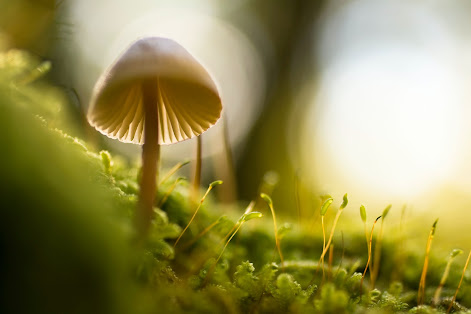THE EARTH WILL BE DEFINITELY GOING TO THANKS TO THESE MUSHROOM COFFINS
Environment-harming traditional burial customs have existed for a very long
time. The usage of metal caskets and lacquered coffins, which emit damaging
chemicals into the earth, is where the bad effect starts. The earth receives
more than 800,000 gallons of formaldehyde alone from embalmed bodies each
year. Additionally, the United States currently has one million acres of
cemeteries, using four million acres of forest in the process of making
coffins.
Even though it is a widespread alternative, cremation has its own
environmental risks because it releases pollutants into the atmosphere such
as carbon monoxide, heavy metals, and sulfur dioxide. As a result, people
are actively looking for more environmentally friendly ways to say goodbye
to the world in order to make a lasting impression.
This is where mushroom coffins come into play, providing a green alternative
to conventional funeral customs. An imaginative Dutch inventor developed
these cutting-edge graves. The exquisite simplicity of the mushroom coffins,
which decay in just 45 days, is offered.
The contrasts from traditional burial practices are astounding. Depending on
a number of variables, a traditionally embalmed body may take five to 10
years to disintegrate, leaving behind a mound of bones and hazardous waste.
Decomposition rates can be considerably impacted by even the coffin's
lining. It may take decades or longer for skeletal deterioration to start.
Green burials, on the other hand, dramatically hasten the decomposition
process. As the nearby soil absorbs rainwater, significant decomposition
often happens in natural graves within six weeks. The average time for
complete decomposition is two years, however, bones can last in moist soil
for another 20 years.
Although green burials have obvious environmental advantages, many people
nevertheless cling to conventional customs as comfort throughout the
grieving process. Fortunately, mushroom coffins provide a compromise,
enabling individuals to say goodbye to their loved ones while still
following traditional burial rites.
Bob Hendrikx, a 29-year-old Dutchman, designed the mushroom coffin, compared
to an "unpainted Egyptian sarcophagus," as part of his project to produce a
more effective and environmentally friendly burial method. He was intrigued
by nature's capacity for recycling and looked to mushrooms, which are the
biggest recyclers, for guidance. With this understanding, he developed the
concept of mushroom growth as a coffin.
Produced by Loop Biotech, the coffins are advertised as a method to take
part in the "circle of life." Loop Biotech provides secure graves for the
interment of human remains in collaboration with Natuurbegraven Nederland
(Nature Burials Netherlands). Particularly in Northern Europe, where
residents are aware of the importance of mushrooms in natural ecosystems and
are environmentally sensitive, this novel green burial practice has grown in
acceptance.
Can Loop Biotech meet the escalating demand for microbial burials? The
company, which can already produce 500 coffins at once, also provides
eco-friendly urns for people who prefer cremation. As the ashes inside
decay, these urns are made to nourish and feed a growing tree. Hendrikx
thinks his invention affects how people view death in addition to enhancing
burial customs. He sees it as a fresh narrative that enables people to
participate in something bigger than themselves.
The price of entering a mushroom casket approaches $1,000, while the urns
cost just over $200. However, Loop Biotech presently only ships within
Europe. Despite some criticism, choosing a fungal mausoleum is still far
less expensive than giving your guests a pound of black and white truffles
at your next dinner party.

Post a Comment